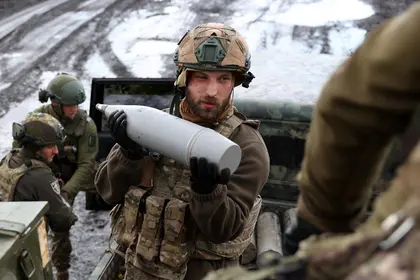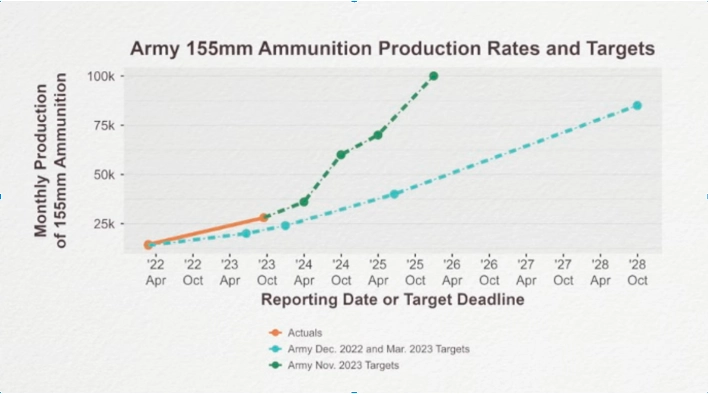The US is planning to double the production of 155mm shells for Ukraine by October this year and up to 100,000 next year, according to US Army acquisition chief Doug Bush.
The goal is to raise production from 28,000 last October to approximately 60,000 by October 2024, then from just under 75,000 in April 2025 to 100,000 by October. The plan was reported by Defense One, citing a slide presented at a Center for Strategic and International Studies (CSIS) think tank event.
JOIN US ON TELEGRAM
Follow our coverage of the war on the @Kyivpost_official.
Bush said the increase is possible thanks to new production facilities in Texas that “have an entirely new way of making the shell.”
He added that there is no need to increase production of other munitions since the US has been able to meet Ukraine’s needs without significantly running down its own stockpiles.
In August 2023, US Brig Gen Pat Ryder said the US had provided 2 million 155mm shells to Ukraine since the invasion began, and it planned to produce 80,000 on average per month in 2024, which was higher than the current estimate.
Nonetheless, the proposed increase could still be significant for Ukraine due to the current acute shortage of munitions on the front line.
Why do more 155mm shells matter for Ukraine?
Kyiv said the “critical” shell shortage on the front has led to scaled-back operations, while Russia maintains an upper hand in artillery power thanks to fresh supplies from North Korea, which amount to a million shells by some estimates.

‘Europe Must Stand Up’ – EU Lawmakers Clash Over Trump’s Return, Musk’s Political Meddling
Ukraine has been struggling to fire 2,000 shells a day in recent months as reported by the New York Times, which is significantly lower than Russia’s 10,000 shells per day.
A fresh supply of 155mm NATO standard shells, with a longer range and better accuracy than their Soviet counterparts, could also provide Kyiv with a distinctive advantage over Russia.
While it is difficult to ascertain how many 155mm shells Ukraine fires per day, they are known to be more effective on the battlefield and can potentially offset the difference in numbers.
For example, modern 155mm artilleries provided by the West, equipped with modern fire control systems, means Ukraine could achieve a hit while spending fewer shells.
While increasing production – and after that, deliveries – could take time and Ukraine is unlikely to benefit from the proposed increase immediately, they could still bolster Kyiv’s defense against the Russian invasion in the long run due to the current static nature of the war.
What does increased 155mm shell production mean for the US?
The reliance on artillery fire in modern warfare, as demonstrated by the war in Ukraine, could also alter the US’s mindset for munition production.
“If larger stockpiles are a way to mitigate risk for an extended conventional conflict, then that needs to be looked at,” said Bush.
Bush added that Ukraine-related investments could also provide the US with a “much healthier” industrial base for all types of conventional munitions in the future.
With that being said, whether the US could increase production ultimately hinges upon a $3.1 billion package on munition production and modernization included in the stalled $61 billion aid package.
The US has been the largest military donor to Ukraine since the full-scale invasion began, providing $43.9 billion worth of military aid to Kyiv, but it arrived empty-handed for the first time during January’s Ramstein meeting while Washington’s debates over continued Ukraine funding raged.
You can also highlight the text and press Ctrl + Enter











